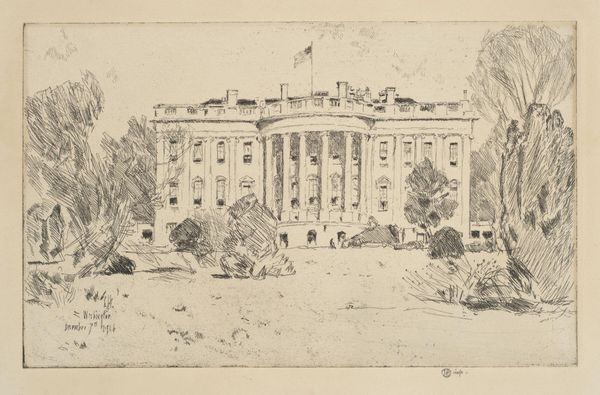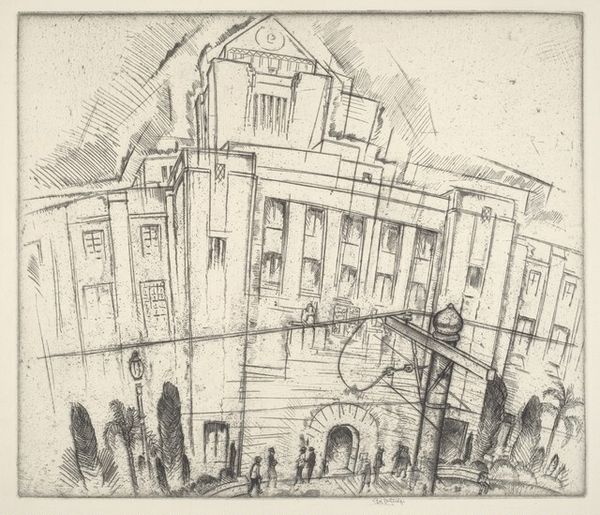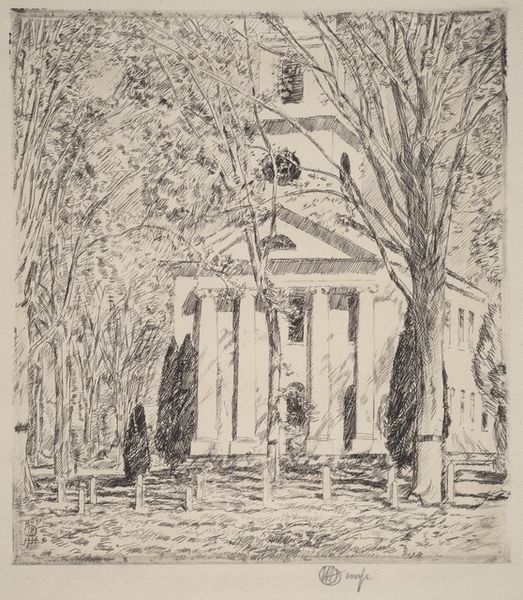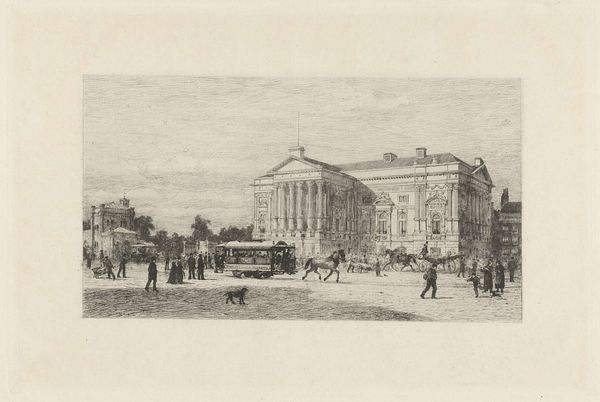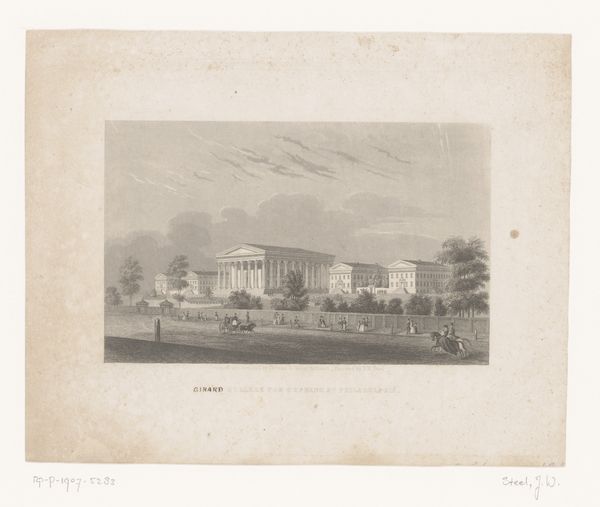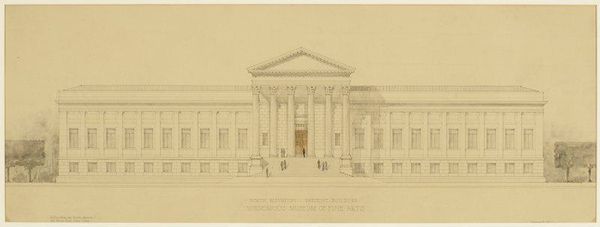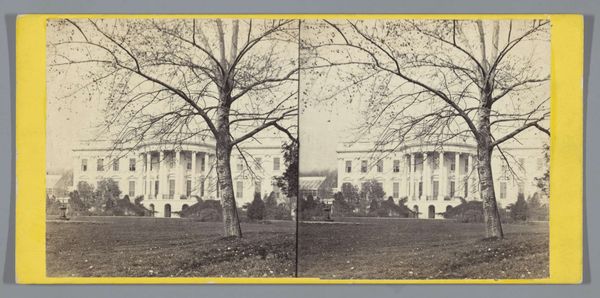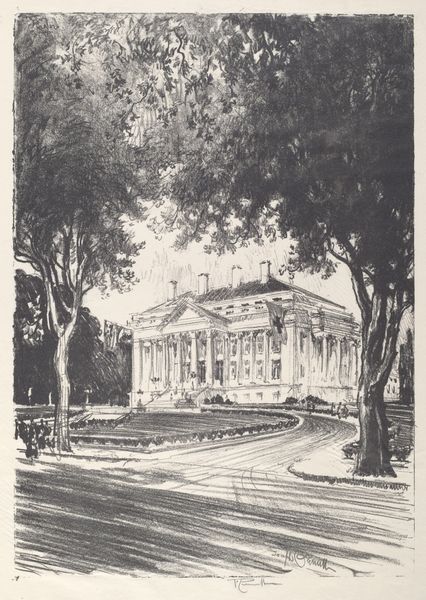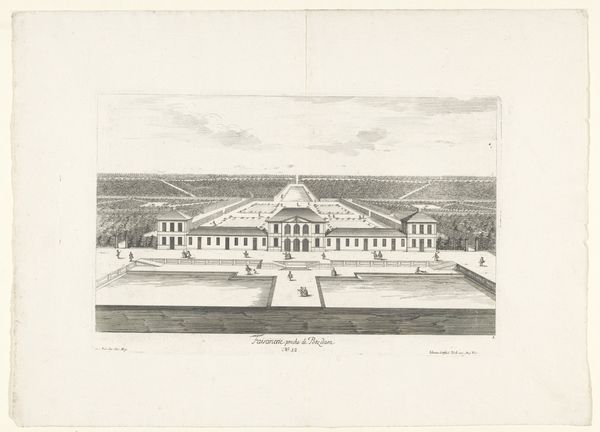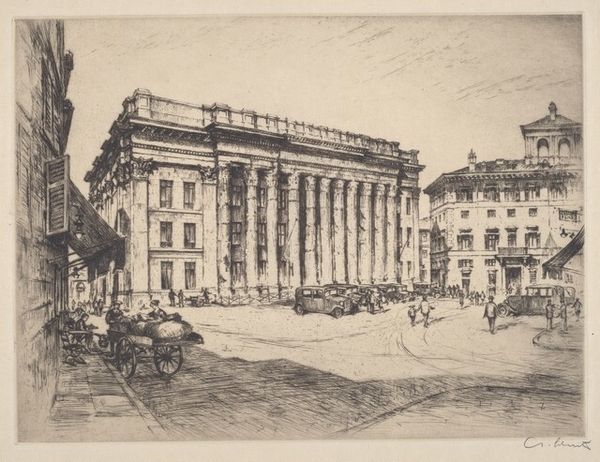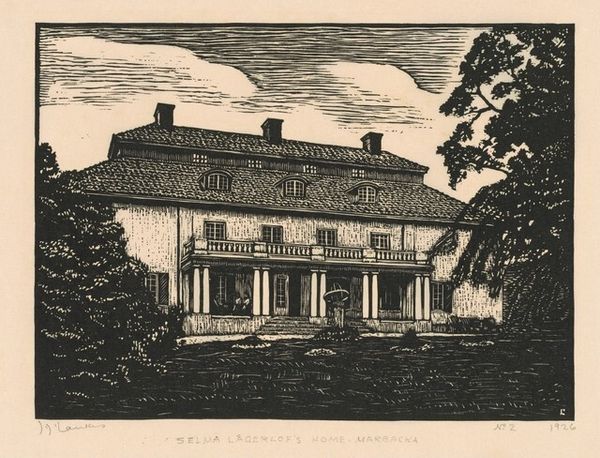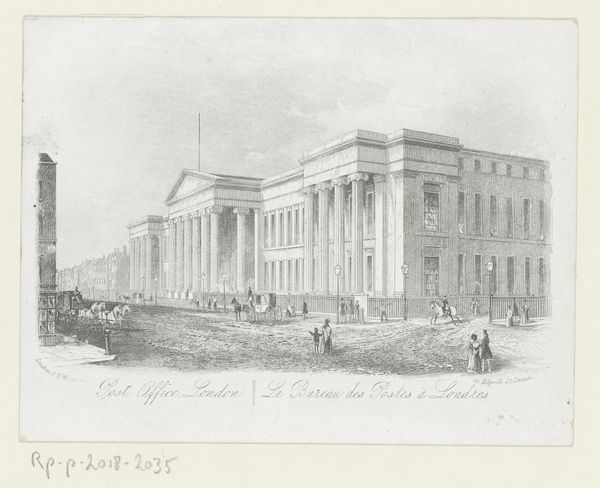
drawing, print, ink
#
drawing
# print
#
landscape
#
ink
#
cityscape
#
realism
Dimensions: plate: 12.7 × 20.32 cm (5 × 8 in.)
Copyright: National Gallery of Art: CC0 1.0
Editor: This is Childe Hassam’s "The White House," created around 1925. It’s an ink drawing, or maybe a print? Anyway, I’m immediately struck by how…ordinary it looks. We usually see the White House in these grand, imposing photos, but this feels like a casual snapshot. What do you see in it? Curator: It's precisely that sense of the ordinary that I find so compelling. Hassam is not just depicting a building; he’s portraying it as a symbol deeply embedded within the fabric of American life. Look at the people in the foreground; they aren’t staged or monumentalized, they are everyday citizens interacting with the iconic architecture. The social dynamic interests me: how does a national symbol get filtered and experienced by the public? Editor: That’s a great point about the figures. They’re almost like tourists. But in making the White House seem "approachable," is Hassam perhaps subtly reinforcing its power? I mean, it's still *the* White House, after all. Curator: Absolutely. It’s a complex negotiation. By situating it within a seemingly accessible, democratic scene, Hassam arguably strengthens its ideological force. The art lies in creating accessibility while underscoring its cultural and political weight. Is it a moment of celebration or contemplation? What about that very early twentieth-century view might have interested Hassam as subject matter? Editor: I guess I never thought about a building needing 'framing'. I'm really fascinated about the idea that by framing it within a context, Hassam's image shapes how people feel about the White House, more than its simple existence might. Curator: Precisely. Art is more than decoration; it is always a narrative, an argument. The context helps to shape our understanding and perception.
Comments
No comments
Be the first to comment and join the conversation on the ultimate creative platform.
